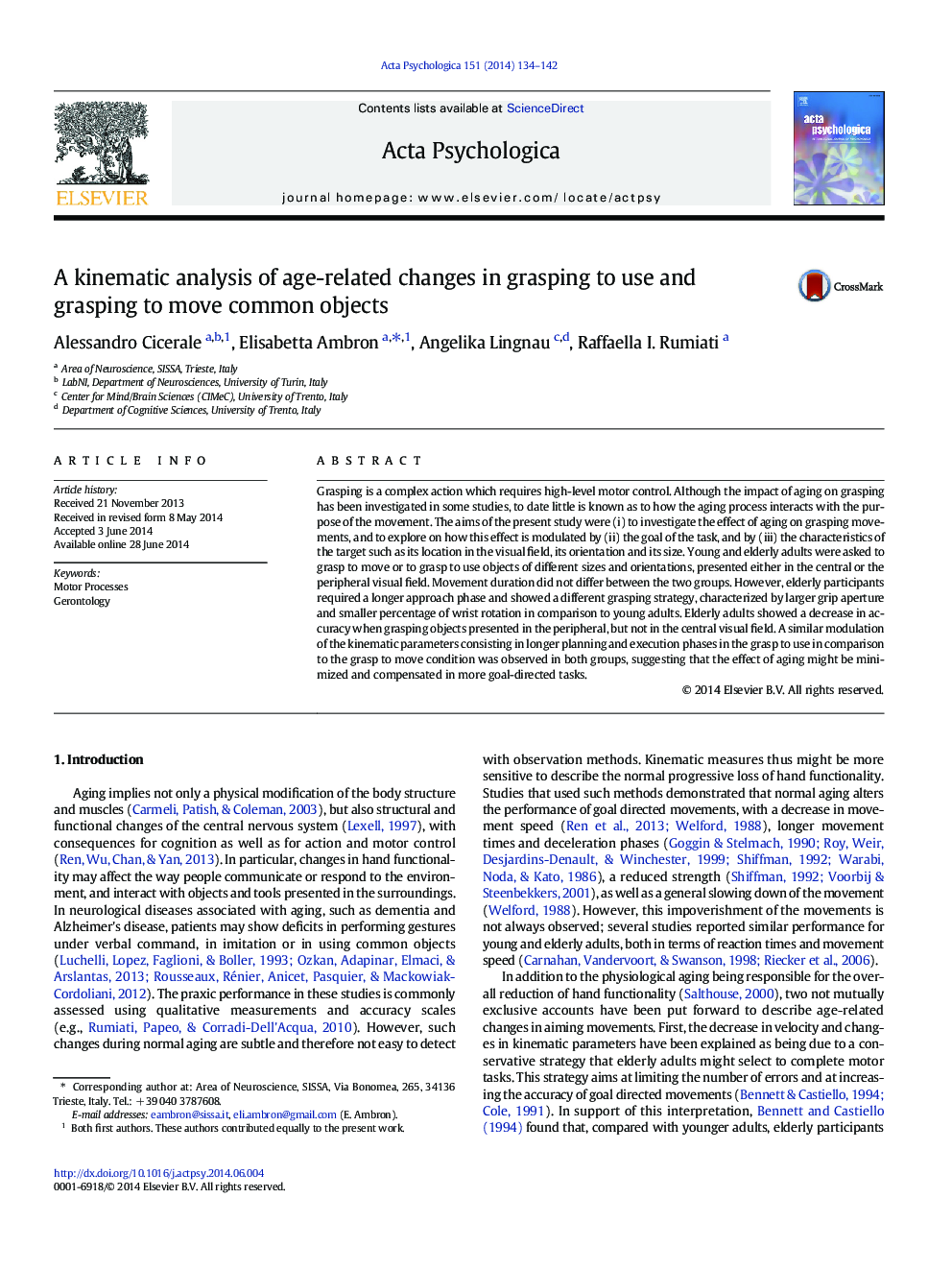| Article ID | Journal | Published Year | Pages | File Type |
|---|---|---|---|---|
| 7277576 | Acta Psychologica | 2014 | 9 Pages |
Abstract
Grasping is a complex action which requires high-level motor control. Although the impact of aging on grasping has been investigated in some studies, to date little is known as to how the aging process interacts with the purpose of the movement. The aims of the present study were (i) to investigate the effect of aging on grasping movements, and to explore on how this effect is modulated by (ii) the goal of the task, and by (iii) the characteristics of the target such as its location in the visual field, its orientation and its size. Young and elderly adults were asked to grasp to move or to grasp to use objects of different sizes and orientations, presented either in the central or the peripheral visual field. Movement duration did not differ between the two groups. However, elderly participants required a longer approach phase and showed a different grasping strategy, characterized by larger grip aperture and smaller percentage of wrist rotation in comparison to young adults. Elderly adults showed a decrease in accuracy when grasping objects presented in the peripheral, but not in the central visual field. A similar modulation of the kinematic parameters consisting in longer planning and execution phases in the grasp to use in comparison to the grasp to move condition was observed in both groups, suggesting that the effect of aging might be minimized and compensated in more goal-directed tasks.
Keywords
Related Topics
Life Sciences
Neuroscience
Cognitive Neuroscience
Authors
Alessandro Cicerale, Elisabetta Ambron, Angelika Lingnau, Raffaella I. Rumiati,
